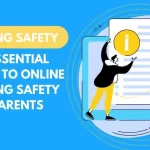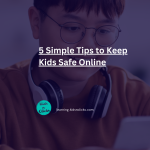What Is an Algorithm?
What Every Parent Should Know.
Even innocent exercise videos can take a dark turn for your children online. Learn how algorithms work and how to protect your kids

Watch The Video Below:

So, What Is an Algorithm?
At its simplest, an algorithm is a set of instructions a computer follows to make decisions.

Watches Content
Algorithms track what videos your child watches and for how long.

Monitors Engagement

Serves Similar Content
Then they offer more of the same. Helpful, until it’s not.
The Innocent Start: “Exercise Videos”

Initial Search
Your child searches for “fun workouts” and finds positive,
age-appropriate content.

Algorithm Shift
Soon they’re seeing “What I eat
in a day” videos and weight loss journeys.

Dangerous Territory
Eventually, content shifts to unrealistic body standards and potentially disordered eating.
This is how an innocent interest becomes a risky rabbit hole—without your child ever searching for it.
Why This Happens
Engagement Over Safety
Algorithms are built to maximize engagement, not protect users.
They don’t distinguish between healthy or harmful content.
UK teens say algorithms showed them harmful content they never searched for
Parents unaware of how quickly content recommendations can escalate
What Can Parents Do?
Talk About Algorithms
Explain simply: “Apps show you more of what you click on, even if it becomes unhealthy.”
Ask Critical Questions
“Why do you think this video appeared?” “Is this advice helpful or harmful?”
Co-View Content
Explain simply: “Apps show you more of what you click on, even if it becomes unhealthy.”
Teach Digital Literacy
Help them spot red flags like “too good to be true” claims and unhealthy obsessions.
Use App Controls
Reset recommendations and restrict topics using platform safety features.
Final Thought
Algorithms aren’t evil—they’re just doing what they’re programmed to do. It’s up to us to teach our children digital literacy.
In today’s world, understanding how content is selected for your child is essential.
Help your child spot patterns, question content, and stay aware of what they’re consuming digitally.
Teaching them to question what they see online isn’t just good advice—it’s a critical life skill.








